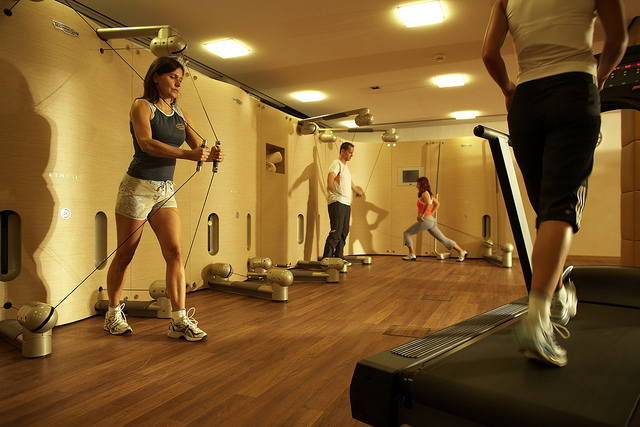Health and wellness has become more than signing up for a gym membership and dieting. For many, it is now a way of life. Today, the average household spends $148 monthly on health and wellness-related items. Further, according to a recent report from Juniper Research, almost 60 million fitness trackerswill be in use by 2018. Clearly, the future of personal health is bright, andwith consumer tech power players jumping intothe fitness space – such asUnder Armour, which acquired fitness apps; Endomondo and MyFitnessPal; and Apple debuting its highly anticipated Apple Watch – it’s clear that the industry will continue to expand and improve for years to come.
A Shift in the Industry
As the fitness market continues to grow and consumer interest in personal health increases, the intersection of wellness and technology has shifted from simply tracking specific activity to being able to monitor overall well-being. It started as competition between wearable tracking devices(like FitBit and JawBone), but the industry has grown far beyond that as new products, systems and apps are being introduced to measure different aspects of our health, from muscle quality to heart rate.
With companies introducing new health initiatives daily, we are now going beyond quantifying personal health activity, and beyond wearables recording the number of steps taken, towards qualifying our efforts. As a whole, these new technologies come together toplay a role in painting a bigger picture of our overall wellness. Simply stepping on the scale is a thing of the past. Focus has shifted away from weight as the best indicator of healthiness, as people can now track progress of different activities to measure their overall health.
Big Data, Big Opportunity
As fitness-tracking tools continue to advance, users will continue to provide individual datafrom personal information, such as location and birthdate, to specific logs of actual activities. This constant stream of user-generated data offers an enormous opportunity for companies in the space to tailor the user experience and expand their capabilities. With this information, companies can personalize the experience for each individual, based on their own activity and goals. Many apps and devices also offer social capabilities in the form of social data-sharing, allowing users to interact with others, track friends’ progress and activities, and see where they fit among the user base. Interactive fitness platform MapMyRun, for example,not only gives users the option to access their individual data over time, but also offers a leaderboard for users to compare their runs and individual stats with others.
The access to big data from fitness activity also offers promise for insurance providers and healthcare companies. While still in the early stages, Aetna, one of the countries’ largest insurance companies, is spearheading this concept as part of its “Get Active” wellness program, which allows their corporate customers’ employees to funnel data from their trackers. Aetna then uses the data to send totheir corporate customers, who then analyze the information, based on things such as engagement, level of activity and user improvements. User-entered data allows companies of all sizes to evaluate health and wellness initiatives and address the needs of employees accordingly, based on their individual wellness goals.
Which Direction Are We Headed?
Despite the criticism, fitness technology will play an enormous role in how we’ll measure personal health going forward. The wellness community as a whole – from doctors to nutritionists – will use the measurements and the data from this technology to aid consumers in painting an accurate picture of their individual health. Looking down the road, it will be interesting to see how trends shift alongside fitness technology, as the industry has the potential to change behaviors on a large scale. Will personal trainers be replaced by apps? Will people stop pulling workouts from fitness magazines? Time will tell.
Image credit: CC by Hotel Der Oeschberghof – Golf – Spa – Tagung




